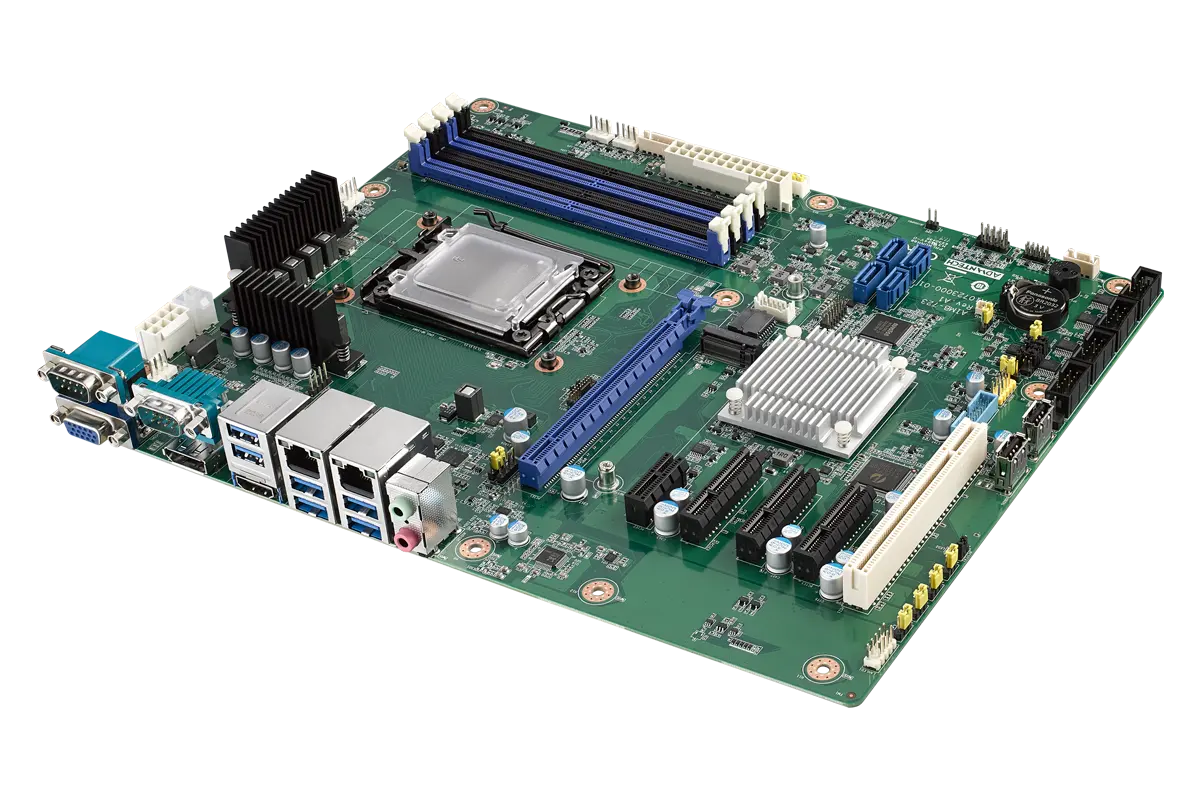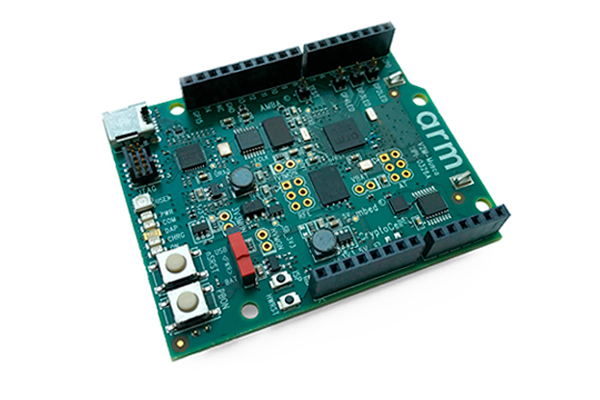
Across numerous decades, the processing arena has been led by two chief designs: ARM in comparison to x86. Each platform boasts its own unique set of strengths, leading to a vigorous contest for sector prevalence. While x86, the senior technology, has long held the crown in desktop and server markets, ARM's ascendancy is extremely impressive.
The power-consumption benefit of ARM, coupled with its flexibility, has made it a leading choice for portable gadgets and integrated solutions. However, ARM is now targeting to conquer new realms, including netbooks and server infrastructures. The drive has inspired the existing x86 powerhouses, who are reacting by developing new technologies to maintain dominance.
- Major divergences in layouts influence operation speed, power consumption, and overall system design.
- The developing preferences of customers are driving the demand for more powerful computing solutions.
In conclusion, the competition between ARM and x86 remains fluid and constantly changing, with both platforms continuously evolving to meet the demands of a rapidly changing world. The outcome of this conflict remains to be seen, but one thing is certain: the future of computing will be shaped by the innovations and advancements of these two titans.
Choosing ARM or x86 CPU for Maximum Output
Across the dynamically shifting digital sector, selecting the leading computational model can be a daunting task. Two titans dominate the market: ARM and x86. Both offer compelling benefits, but their performance details diverge significantly. This complete analysis delves into the foundations of each architecture, empowering you to make an informed option.
- Capacity
- Power Consumption
- Investment
We'll explore benchmarks, real-world contexts, and the assets of each architecture, helping you identify which platform best suits your demands.
Causes of ARM's Popularity Over x86 in Embedded Solutions
ARM cores continue to excel in embedded equipment domains. This strength follows diverse vital contributors. First, ARM's blueprint demonstrates power economy, making it ideal for devices with limited power budgets. Second, the ARM ecosystem features an extensive and vibrant network of developers and hardware partners, providing ample support and breakthroughs. Finally, ARM's flexible rights system supports personalization for targeted implementations, leading to a wide range of offerings. These factors have amalgamated to confirm ARM preference for countless embedded devices, from smartphones to smartwatches and even industrial control systems.
Optimal x86 Boards for Skilled Users
Selecting the perfect x86 SBC presents a challenging decision, especially when you're a demanding tinkerer. You need a device that can process substantial data, offer powerful execution, and provide a platform for sophisticated processes.
- Several factors contribute to the best SBC for your needs, including processing power, RAM capacity, storage options, connectivity features, and community support.
- For dedicated experts and specialists, a board with a capable chip including Intel Core i5 or Ryzen 5 is essential.
- Together with enough RAM and rapid data options requirement for smooth and efficient operation.
Resist the temptation of minimalistic SBCs; invest in a platform that can wholly back your experiments.
Unlocking the Potential of x86 Single Board Computers
Examining economical x86 SBC options brings promising results. These compact devices provide abundant opportunities for developers. From building digital homes to software ecosystems, x86 SBCs provide a adaptable, economical environment for learning. This guide will empower you with knowledge to navigate the diverse landscape of x86 SBCs, exposing possibilities of these clever instruments.
- Discover origins and contributions of x86 single board computers in computing evolution.
- Review known x86 SBC configurations, factoring specs and target users.
- Understand crucial peripherals making up x86 SBC architecture.
- Examine programming interfaces and system software compatible with x86 SBC hardware.
- Expose advanced executions of x86 SBCs for various professional fields.
Growing Deployment of ARM Systems in Desktop Environments
Although often linked to wireless device prominence, ARM architecture is steadily making inroads towards workstation technology fields. Several factors contribute to this movement, including the increasing demand for energy-efficient computing and the growing popularity of cloud-based applications. Manufacturers including Apple integrate ARM cores in portable computers, demonstrating the potential for high speed. This trend is further fueled by the development of new models specifically tailored for desktop workloads. As these innovations mature and become more widely available, we can expect to see ARM's presence expand substantially within forthcoming periods over the PC ecosystem.
Understanding Differences Between x86 and ARM for Best Choice
Upon deciding on a system, two pivotal architecture types exist: x86 and ARM. Both offer distinct qualities, making the decision a matter of customizing your needs with the right platform.
Long-established x86 architecture is respected for formidable speed coupled with a huge software library It prevails in desktops, laptops, and workstations, particularly for demanding tasks like gaming or video production. ARM, on the other hand, stresses energy efficiency and a compact design. This enables it ideal for mobile devices, embedded systems, and increasingly, network hosts.
- Contemplate your core operational scenario: Are you a gamer? Do you need raw power or streamlined energy consumption?
- Study software functioning across architectures. Not all applications are available on both platforms.
- Include financial outlay and availability linked to platform choice.
Compact yet Strong Foremost ARM Computation Platforms
Single board system scene enlarged, controlled by ARM processors for resource efficiency and versatility. These compact tools pack a surprising punch, offering incredible capabilities within a small footprint. For hobbyists, makers, and even professionals, ARM-based SBCs provide a flexible platform for everything from learning about electronics to building fully functional solutions. Whether you're looking for a budget-friendly option or a high-performance powerhouse, there's an ARM-based SBC out there to meet your needs.
- Dive with us into front-runners across this blossoming field!
Contrasting ARM and x86 Throughput Benchmarks
Matching ARM to senior x86 designs across evaluations reveals noteworthy results. While x86 has traditionally ruled processing ability, particularly for compute-heavy uses, ARM platforms have been steadily closing the gap, especially in areas like mobile performance and energy efficiency. The recent surge in popularity of ARM-based processors for laptops and desktop PCs further fuels this conflict. It's important to note that benchmark results can be controlled from assorted sources, including the specific variant trialed, application burden, plus the OS environment. Therefore, it's crucial to consider statistics with insight beyond figures.
Has ARM Become the New Standard Instead of x86
The electronic sector perpetually adjusts, and one of the most noteworthy changes feature ARM's increased footprint. While x86 has long influenced the market, ARM's low consumption earns rising interest. This has led to debate that ARM conceivably outmatch x86 as the foremost architecture.
- A growing number of elements power this movement: ARM's eco-friendly design benefits mobile appliances, ultramobile computers, and cloud hosts.
- In addition, ARM's explorable patent system promotes advancement among developers, generating multiple classes of ARM-integrated components.
Although ARM rises, x86 keeps a powerful presence. Key players invest extensively in x86 progress, and older architectures remain active in various environments.
Finally, it is too early to say if ARM will solely dominate x86. The computational future involves collaboration between ARM and x86, with each participating individually within assorted system categories.
Prospects for ARM and x86 Integration in Technology
The IT domain advances swiftly. Once distinct architectures, ARM and x86 are now on a collision course, converging to reshape the future of processing power. This convergence presents exciting opportunities for developers and consumers alike. ARM's energy efficiency and compact design have made it the dominant force in mobile devices, while x86 has long reigned supreme in desktops and servers. However, these distinctions are becoming less clear-cut, driven by factors such as the increasing demand for mobile computing and the rise of cloud services.
- This synthesis presumably fosters a diversified product spectrum, powered by hybrid architectures that take advantage of attributes across both frameworks. This could result in higher-performing mobile gadgets with enhanced energy storage alongside economical servers.
- Plus designers enjoy expanded infrastructure inventories, enabling them to create innovative applications that explore new frontiers. The future of computing raises hopeful expectations, with ARM and x86 convergence playing a pivotal role in shaping the next generation of technology.
